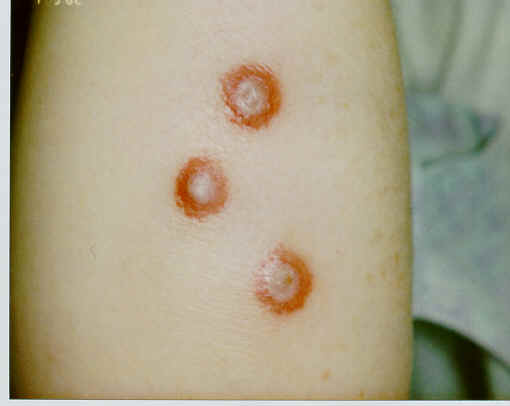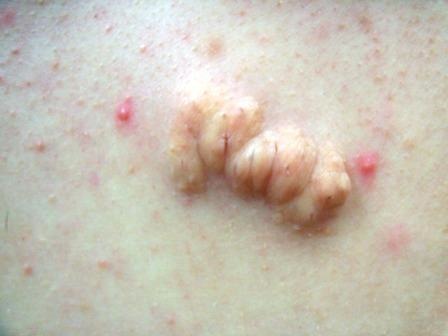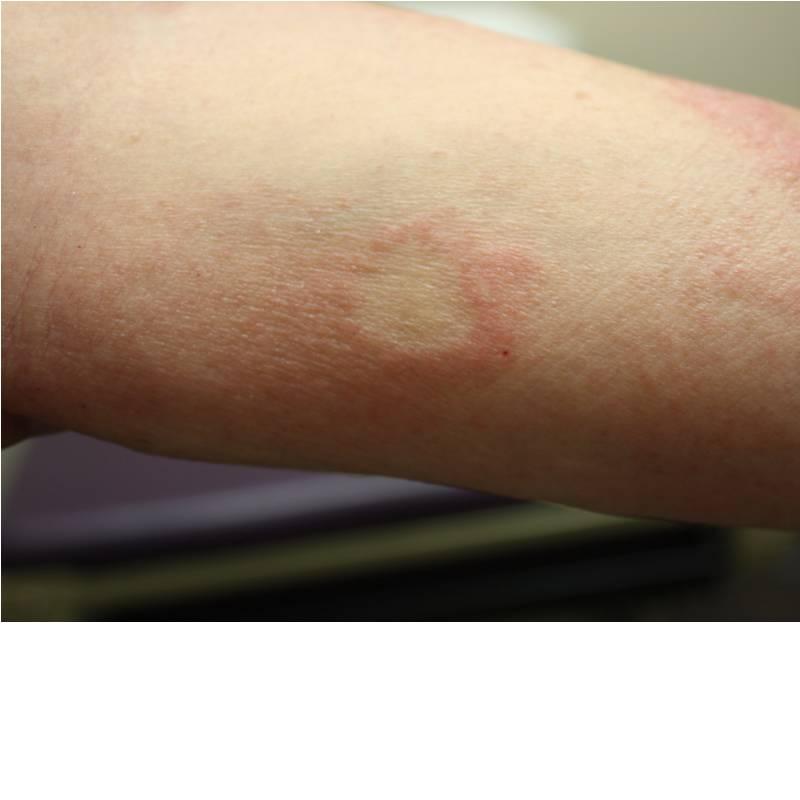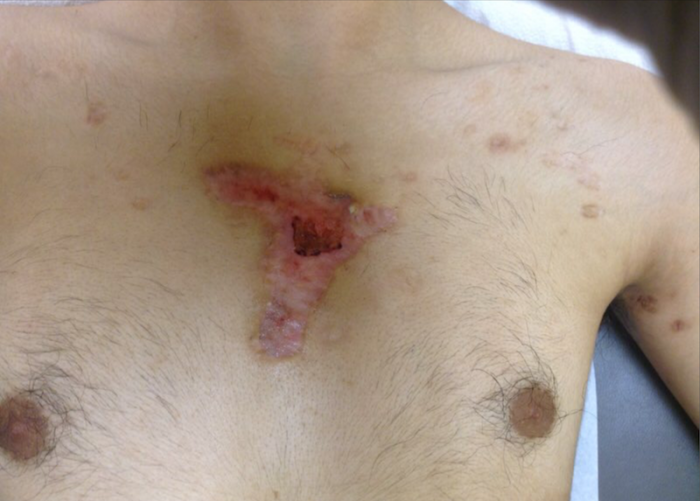CORRECT DIAGNOSIS:
Sweet’s Syndrome
DISCUSSION:
Classic Sweet’s syndrome is characterized by erythematous papules or nodules that coalesce to form plaques, leukocytosis, and acute onset of fever. A synonym is Acute Febrile Neutrophilic Dermatosis. Arthritis, arthralgias, myalgias, conjunctivitis, and the oral lesion may also be seen. Sweet’s primarily affects adults with women outnumbering men 3:1. The majority of cases follow upper respiratory infections, however, other infectious associations include yersinia, toxoplasmosis, histoplasmosis, salmonellosis, vulvovaginitis, and tuberculosis (Andrews p 156).
Hematologic and solid tumors are associated with 10% of Sweet’s cases. The most common medications associated include granulocyte-colony-stimulating-factor (Neupogen), oral contraceptives, minocycline, and trimethoprim/sulfamethoxazole.
Upon biopsy, our patient had a thin transudate without obvious pus extrude through the lesion. Culture results were negative.
TREATMENT:
Initial treatment included 1% hydrocortisone and 1%iodoquinol (Vytone) alternating with mupirocin (Bactroban) ointment. The consulting physician empirically began treatment with Unasyn 3gm IV q 8 hours.
No new lesions were noted during hospitalization, and at the time of discharge, the WBC was 8,000. Lesions slowly involuted without scarring over the next 6 weeks and no new lesions presented. The patient continued to receive Neupogen and all of her other medications without incident.
We believe that our patient fulfilled the classic criteria for Sweet’s syndrome. Although, her subsequent leukocytosis may have been multifactorial.
Other Treatment options:
Glucocorticoid therapy was not initiated due to the lack of progression of the lesions and her immunosuppressed status.
REFERENCES:
Odom, R. B. (2000). Andrews’ diseases of the skin (9th ed.). W. B. Saunders Company. [Medline]
Fitzpatrick, T. B. (1997). Color atlas and synopsis of clinical dermatology (3rd ed.). McGraw-Hill.
Elder, D. (1999). Synopsis and atlas of Lever’s histopathology of the skin. Lippincott Williams & Wilkins.




